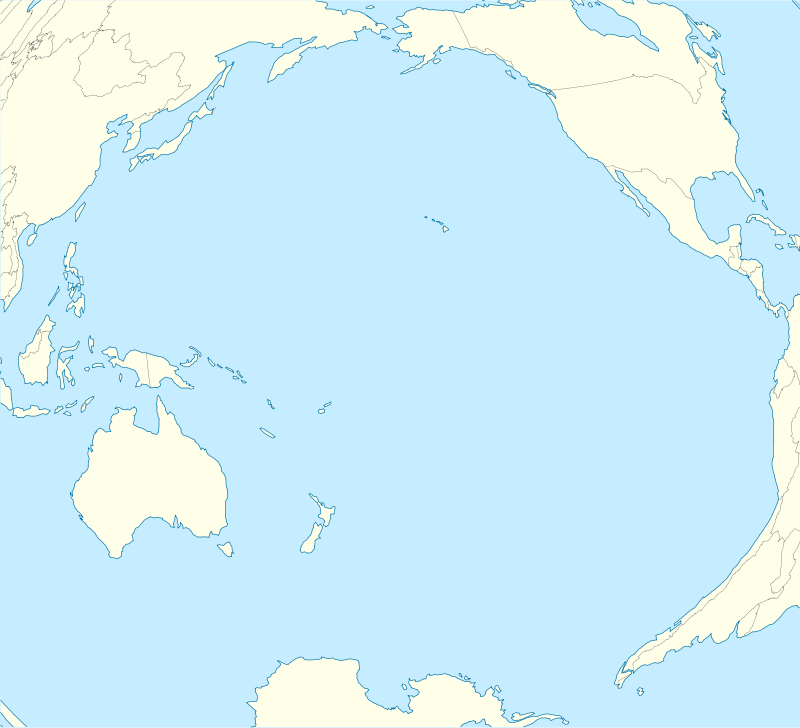Motu One (Marquesas Islands)
|
Northwestern Marquesas Islands. Motu One and its lagoon are the pale blue oval shape in the upper right. Image courtesy of Johnson Space Center. | |
 Motu One Location of Motu One in the Pacific Ocean | |
| Geography | |
|---|---|
| Location | South Pacific Ocean |
| Coordinates | 7°51′S 140°23′W / 7.85°S 140.38°WCoordinates: 7°51′S 140°23′W / 7.85°S 140.38°W |
| Archipelago | Marquesas Islands |
| Area | 0.03 km2 (0.012 sq mi) |
| Administration | |
| Overseas country | French Polynesia |
| Demographics | |
| Population | 0 (2002) |
| Pop. density | 0 /km2 (0 /sq mi) |
Motu One (Marquesan for "Sand Island"; French: Îlot de Sable) is the name of a small sandbank with no vegetation located on the western edge of a coral reef. The reef is approximately 5 kilometres (3.1 mi) in diameter and the islet or islets are less than a hectare in surface, rising only a few feet above sea level and changing shape regularly owing to the action of the currents.[1]
Motu One is the northernmost of the Marquesas Islands, located about 30 kilometres (19 mi) northeast of Eïao and 15 kilometres (9.3 mi) northeast of Hatutu. It is also the only island in the group that is not made of exposed volcanic material, being a calcareous coral reef on a volcanic plug.[2]
Motu One is administratively part of the commune (municipality) of Nuku-Hiva, itself in the administrative subdivision of the Marquesas.
Although Motu One was reportedly visited by Marquesans, primarily on egg-collecting missions, there is no archaeological evidence that they were ever inhabited. The first Westerners to sight the islet were on the 1813-1814 voyage of the American commander Commodore David Porter, who named it Lincoln Island. Subsequent explorers also called it Sand Island.
Ecology
Green sea turtles nest on Motu One. There is a large stand of Porolithon (Hydrolithon) that is unique in French Polynesia.[3]
There are a wide variety of pelagic birds nesting on the islets including a subspecies of the southern Marquesan reed warbler, the Mohotani Marquesan warbler (Acrocephalus mendanae consobrina) (Murphy & Mathews, 1928).[4]
Since 1992, the whole reef and island ecosystem have been protected as the Motu One Reserve.[5]
